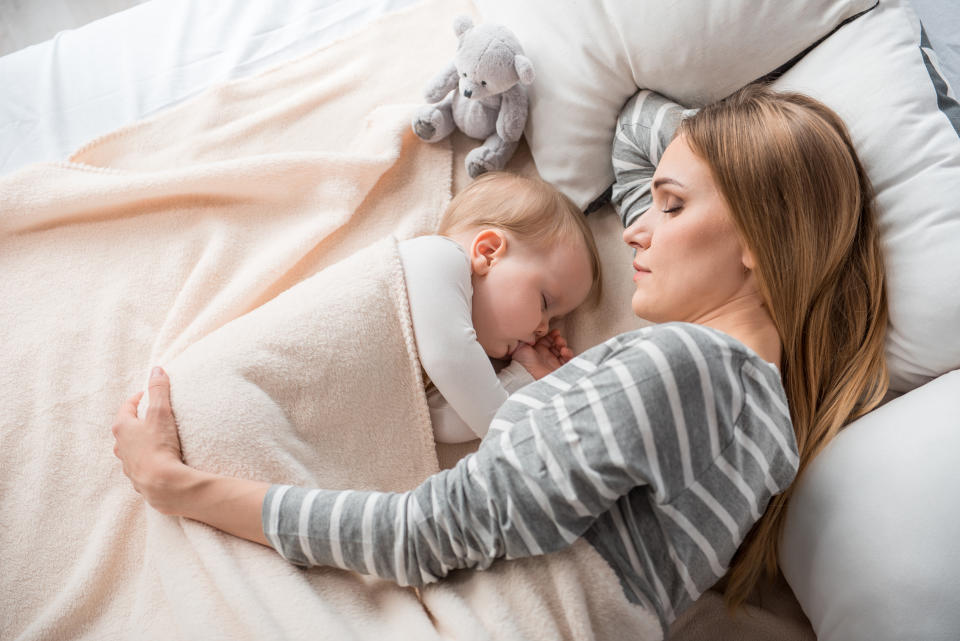Cot death decline stalling in England and Wales, 'extremely concerning' statistics reveal

A charity has warned the rate at which cot deaths are declining in England and Wales is “not good enough”.
Unexplained infant mortality has been decreasing since records began in 2004.
The latest Office for National Statistics (ONS) data has revealed, however, this decline has been “levelling off” since 2014.
The Lullaby Trust, which promotes “safer sleep for babies”, is “extremely concerned” by the figures.
It also worries the coronavirus outbreak will bring about increased pressure on public health services, making matters worse.
Read more: Doubts about safety claims of baby boxes
“The rate of unexplained infant deaths had been decreasing since records began in 2004, but today’s figures help confirm these improvements have levelled off since 2014,” said Gemma Quayle, from the ONS.
“There are a range of factors that influence the risk of an unexplained infant death, from sleeping practices to the age of the mother.
“Overall, the risk is relatively small, but we will continue to monitor the figures closely for further changes.”

‘Not good enough’
Cot death, or sudden infant death syndrome (SIDS), occurs when a baby dies suddenly for no apparent reason.
It has been linked to an infant overheating, being exposed to cigarette smoke, or sleeping in a position other than on its back.
SIDS is rare, with 198 babies unexplainably dying in England and Wales in 2018. This is compared to 317 cases in 2004.
While the figures may seem like they are moving in the right direction, “the unexplained infant mortality rate has levelled out” in recent years, according to the ONS.
Read more: Mother’s co-sleeping warning after death of two-month-old son
Between 2014 and 2018, around 0.3 babies in every 1,000 live births were victims of SIDS each year.
“We are extremely concerned,” said Jenny Ward, CEO of The Lullaby Trust.
“Whilst the ONS describes this as a levelling off, this overall stalling of rates since 2014 is not good enough.”
The 2018 figures reveal SIDS was highest among babies whose mothers were under 20, as well as those of a low birthweight (less than 2,500g/5.5lb).
Ward noted cot death was also more common in less privileged areas.
The ONS figures reveal the rate of SIDS was highest in the north-west, affecting 0.41 babies per 1,000 live births – 37% above England and Wales’ average.
“SIDS rates are highest in the most deprived areas,” said Ward.
“We are concerned the increased pressure placed on public health services by COVID-19 [the disease caused by the coronavirus] – meaning less support for new parents – combined with rising poverty could lead to a further increase in the number of deaths.
“Only by making all families aware of how they can reduce the risk of SIDS and support them to help protect their babies can we ensure we do not see more lives lost.”
Read more: Parents warned about cot canopies
The Lullaby Trust noted the number of SIDS cases marginally increased from 189 in 2017 – 0.28 fatalities per 1,000 live births, to 198 in 2018 – 0.3 deaths per 1,000.
The ONS stressed, however, the relatively small number of SIDS incidences that occur each year mean the figures “tend to fluctuate over time”.
“Therefore, year on year changes in rates should be interpreted with caution,” it added.

How to reduce the risk of cot death
The exact cause of SIDS is unknown, but is thought to to be a combination of factors that affect a baby at a vulnerable stage of their development.
The risk can be significantly reduced by:
Laying a baby on its back when it sleeps – reduces the risk by up to six times
Sharing a room with a baby during the first six months of its life – can halve the risk
Living in a smoke-free environment during pregnancy and after the baby’s birth – smoke exposure is said to be responsible for around 60% of SIDS cases
Never sleeping on a sofa or armchair with a baby – this can increase the risk by up to 50 times
Not co-sleeping with a baby, particularly if you or your partner have been drinking, smoking or taking drugs
Keeping a baby at a comfortable temperature – if it is sweating or has a warm tummy, remove some bedding. It is normal for an infant to have cold hands and feet. Keep the room at a temperature you feel comfortable in and never place a sleeping baby near a radiator
Leaving a baby’s head uncovered – do not put a hat on a sleeping infant and keep any blankets at shoulder level
Adopting the “foot to feet position”, so a baby’s feet touch the end of its cot
Breastfeeding



